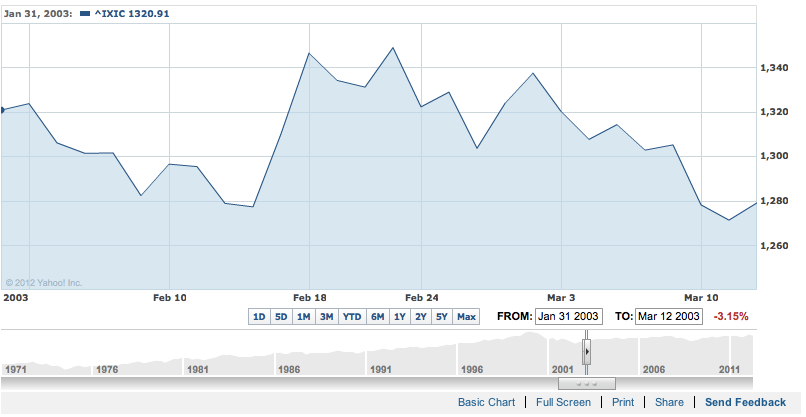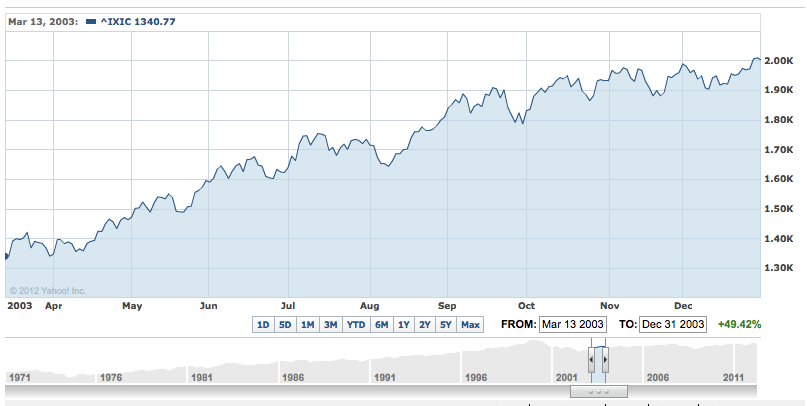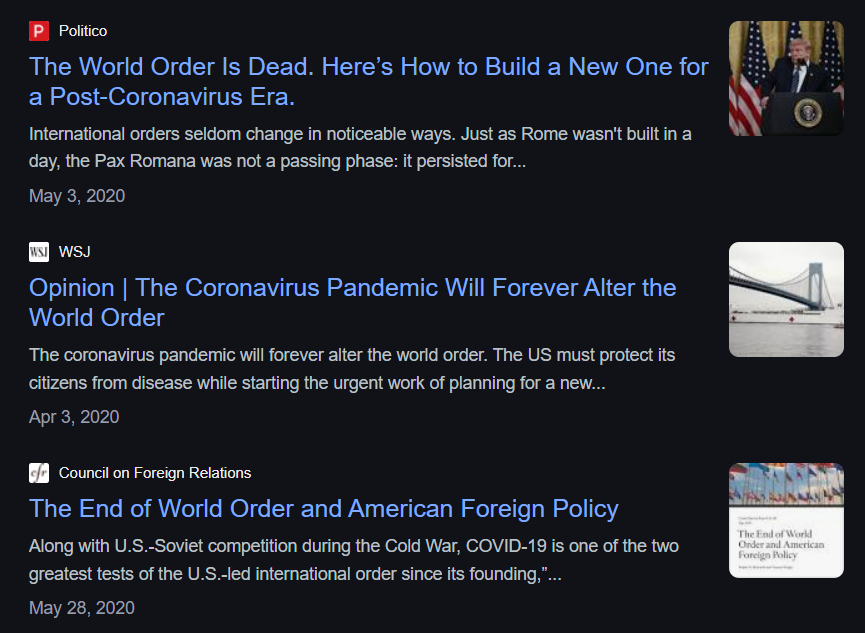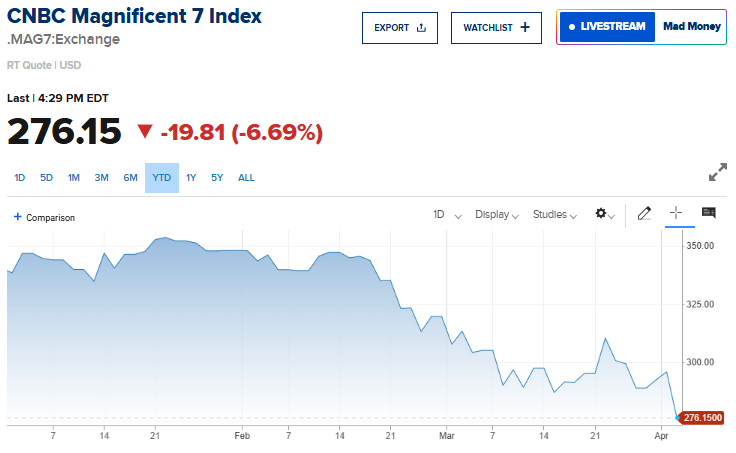Trading Lessons From Recent Wars Aren’t Applicable This Time (Plus A Trade Alert: Here’s What I’m Buying Today)

I obviously don’t know the end game of the Russian Ukraine crisis, but I do know from history (and most recently from the 83 episodes I’ve listened to so far on the Russian Revolution on the Revolutions Podcast from Mike Duncan) that this is a centuries-old conflict that is currently re-flaring up. The West doesn’t want to go to war over Ukraine but neither does it want to do nothing. So these sanctions that the Republican Democrat Regime and their cohorts in power around the Western world have been using as their war tool of choice on developed countries are what they go to again.
I have told the story before (pasted again below) about when I loaded up on longs and covered my final shorts my old hedge fund the day the markets crashed when the US invaded Iraq back in 2003. That trade worked out great as the markets literally put in a short-term and long-term bottom and rallied for years up from those levels. I don’t think that’s going to be the same playbook here if the US/Western world end up in any kind of real war with Russia where the West and Russia forces directly trade blows although if that were to happen, the stock market itself would probably already have really crashed and maybe valuations and opportunities will just be too compelling to not buy/cover shorts into. Russia ain’t Iraq.
Feet-to-fire, I don’t think Russia/Ukraine and the tensions currently so high are going to escalate too much further from here, but if it does, that’s going to probably take markets lower further if it does. That said, I’m not going nuts buying or covering shorts here right now.
I did do some nibbles though and here’s what:
In the hedge fund, I’ve started scaling into what I want to be a mid-sized position in some PYPL (more on this later). I also nibbled a little AMZN, INTC, W and SHOP.
We’ll do this week’s Live Q&A Chat at 11am ET on Wednesday (tomorrow) in the TWC Chat Room or just email us your question to support@tradingwithcody.com.
Stay careful out there, but again, don’t be fearful.
Lessons from one of the times I nailed the market bottom
June 4, 2012 by Cody Willard Leave a Comment
Here’s the second story about a market collapsing back when I was managing my hedge fund a few years ago. No other trades for me today.
I’d just raised my first institutional funds, almost doubling the size of my hedge fund and (hopefully) opening the doors to other institutional money placers like foundations and fund of funds managers and so on. Having started my tech-centric hedge fund in the months leading up to a final bottom at 75% from the top in the Nasdaq, was a great move investment-wise and for me for the long-term, but it made raising money for this cowboy from Ruidoso who’d graduated from UNM, not Harvard and had been a salesman/analyst at a small shop in Oppenheimer, not a hot shot trader at Goldman — well, it made raising money hard. So I was obviously thrilled when I’d gotten a wire from a large family office manager in late February 2003.
The markets had been fading and falling as rumors and news and all indicators were that the US was going back into Iraq to get Saddam Hussein, whether he was affiliated with 9/11 and/or Al Queda or not. I’d been heavy in cash to start the year as I was still just months into my new hedge fund launch and I was trading very conservatively with the funds I had raised. So I was up a little bit vs. a down overall stock market when that money arrived in early March 2003. I’d done my homework on history and had seen that into almost every invasion/start of war in the history of the US, that the markets would fall and then almost immediately bottom when the actual invasion/war started. I wanted to be long and strong into the actual event, but I didn’t want to be too early, of course.
Here’s a chart of the Nasdaq fading into the actual Iraq invasion:

So I immediately started putting that money to work when it arrived in late February, right at the top of that chart above, and as the markets continued to fall, I continued to scale into more longs and to cover up my shorts. By the time I came into work on March 13, 2003, I’d seen my year go from up single digits to down nearly double digits over the past month. My phone was ringing when I walked into my hedge fund hotel office I’d rented at near-charity rates from my prime broker on the 40th floor of a high rise in midtown Manhattan.
It was the guy from the fund of funds on the phone. He was screaming at me before I could say, “hello”.
“Where the #$%&@ have you been? It’s 6:15am and the limits are locked lower and the markets are going to crash this morning!” he yelled hoarsely into the phone. “I’ve left you fifteen @*#%$ messages already and you’re just now lollygagging in?!” Well, that explained his raspy voice. I wondered how many messages he’d left other managers this morning too. Before I could finish the thought, he continued berating me,”You @(*# idiot, you told me not to worry and that we could trust you to get longer! We told you not to cover your shorts, I told you not to buy nothing! I knew better than to put our money with a new active manager. I want to know what you’re going to do this morning and I want to know when I can get my @*(&# back out of your #@(*&@# fund!”
I took an extra split second before answering, to make sure he really was going to let me speak, and I told him, “Well, as for what I’m going to do this morning, I’m planning to stick with my playbook which says to buy the markets as we head into an invasion/war and I’m going to cover some more shorts to get even longer.” He tried to interrupt me, but I continued, “You’ve got a one year lock in on the capital you put in my hedge fund, but I’ll be happy to get it back to you as soon as the markets bounce so I won’t have to sell into this textbook collapse.” And I hung up the phone as he started yelling again.
I did what I said I was going to do, though I’ll certainly admit that I was scared out of my mind and that the buys and short covering I did that morning were some of the hardest trades I’ve ever done. By the time the markets opened, I was down an immediate 5% more than I’d been the day before. I covered my last short and bought calls in GE and I wrote about how doing so was the hardest trade I’d ever made for my subscribers of my trading diary which was at TheStreet’s RealMoney.com at the time. I told them I’d never seen such overwhelming bearishness and while I didn’t think that in and of itself would mean that we would put in an immediate bottom, I did believe that following the playbook was the only way to trade, especially when the playbook was indeed playing out so according to plan.
When I finished writing that post, I grabbed my waste basket and puked. Running a hedge fund was horrible for my nerves and my stomach. And I went on a walk. There was nothing else I could do at that point. I figured my money management career was probably over. What would I do for a living, man? I’d been on TV a couple times, but it wasn’t like I’d been “discovered” by a CAA agent at that point, much less did I have but a handful of contacts in the media world. Could I go back to working at a tech or telecom corporation as I’d done for a while in 2000 and 2001? Ugh, corporatocracy.
The self-doubts had started rickocheting around my skull and my temples were pounding as I realized I was standing in the basketball courts in the projects across the street from my first apartment in NYC at 101st and Amsterdam.
War had just broken out that morning and the markets were skyrocketing off the morning lows. I caught a cab back to my office and sure enough, every stock on my screen was green. Most were up 3-5% and some of my biggest positions, including those in which I owned call options, were up 10% or more. In one of the wildest swings that I ever had, I had gone from being down 5% on the day and double digits on the year, to being up double digits on on the day and back up single digits for the year. The fund of funds who had just put their money into my hedge fund were now up nearly 10% since they’d sent in the money. My phone on my desk was ringing.
I answered it and heard the fund of fundser on the other line — to his credit, apologizing. “Man, what a ride, Cody. Sorry for the way I handled all of that.”
No problem I told him and I continued, “As I’d said earlier, I’ll have your money back to you when I wouldn’t be selling into a panic. With this pop, I think you’ll have your money within the next week or so.”
He didn’t want his money back, he told me. In fact, maybe they should be putting a little more into my actively managed approach he wondered openly.
But I’d had enough of the problems that come with institutional money. I’d now seen firsthand how emotions would kill my performance and all I knew is none of my other of my investors besides this money manager dude who had “blessed me” with his money, had freaked out when the going got tough. Managing money is hard enough without the crazies that come from taking institutional money. I often wrote about how I’d made the conscious choice to forego the size that could have come by becoming a pigeon-holed tech fund that would easily be able to play the institutional money game in the name of seeking outright performance for the investors who trusted me with their money.
Here’s what the markets did after bottoming exactly on March 13, 2003:

Certainly I made a lot of mistakes before and after that wild ride in March 2003, but I’ll never forget the lessons I learned in that particular market bottom that I happened to have nailed, even as I had to suffer through all that pain to get there.
—–
Cody back in real-time 2022 to note that I don’t recommend having a portfolio so aggressively long that it would make that kind of a move just about ever but that was a unique opportunity. This set up is not that set up. Russia is not Iraq. Putin is not Saddam So remain being careful if not scared, as I keep saying. Be cool.



